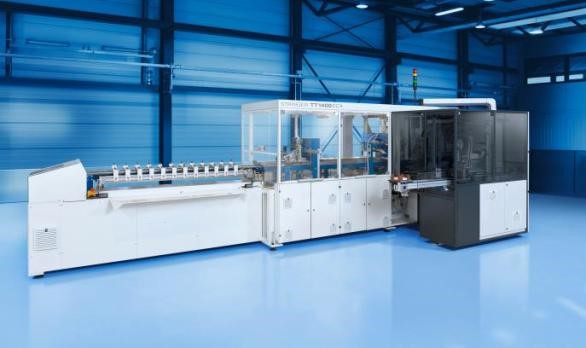Hevel LLC has ordered new stringer systems and layup at Teamtechnik for the production of its heterojunction (HJT) solar modules. These will be installed in the planned extension of the production facility in Novocheboksarsk, in Russia.
The facility is currently in a transition phase from thin film module production to HJT technology. According to an announcement made on Tuesday, the German adhesive technology will be used in the new production facility.
Previously, the manufacturer had performed a series of tests with the adhesive technology. Reportedly, it will help to improve module reliability, while at the same time, reducing costs. The company disclosed no information regarding order volumes.
“The cell and module manufacturer achieved the changeover to the sensitive HJT cells, with thicknesses less than 150µ, in record time,” the company also announced. Hevel has developed its HJT technology under its existing knowledge base resulting from its thin film production, which has now been accompanied with two new stringers of the type “TT1600 ECA”.
The adhesive technology is suitable to connect HJT-cells at low processing temperature in series production. The previously tested modules, which had been equipped with Teamtechnik’s stringer technology had shown higher efficiency and higher output than modules using different adhesive technologies, the company further claims.
Additionally, the layup system, which had also been ordered from Teamtechnik is tailored to the high cyclic output of the two stringers, which increases production reliability.
Elena Bodnarchuk, Deputy CEO of Hevel LLC, says, ‘The deal with Teamtechnik is a logic step in implementing our strategy to develop a new branch of PV technology. Additionally, this system makes us more flexible in regard to module design, material selection, and material combinations. This will enable us to make our own developments in the future, with a high potential for further reducing costs while also increasing quality and efficiency.’
Explaining the adhesive technology, the company specifies that it uses Electrically Conductive adhesive (ECA). The process includes screen printing the compound onto both sides of the HJT cell, before the light-capturing ribbons (LCR) are positioned precisely over the solar cells to connect them and form a string.
This content is protected by copyright and may not be reused. If you want to cooperate with us and would like to reuse some of our content, please contact: editors@pv-magazine.com.




By submitting this form you agree to pv magazine using your data for the purposes of publishing your comment.
Your personal data will only be disclosed or otherwise transmitted to third parties for the purposes of spam filtering or if this is necessary for technical maintenance of the website. Any other transfer to third parties will not take place unless this is justified on the basis of applicable data protection regulations or if pv magazine is legally obliged to do so.
You may revoke this consent at any time with effect for the future, in which case your personal data will be deleted immediately. Otherwise, your data will be deleted if pv magazine has processed your request or the purpose of data storage is fulfilled.
Further information on data privacy can be found in our Data Protection Policy.